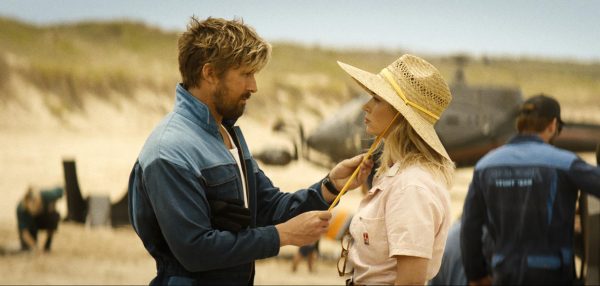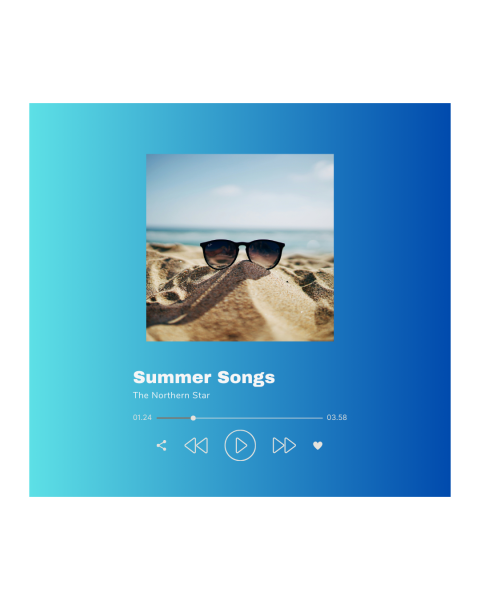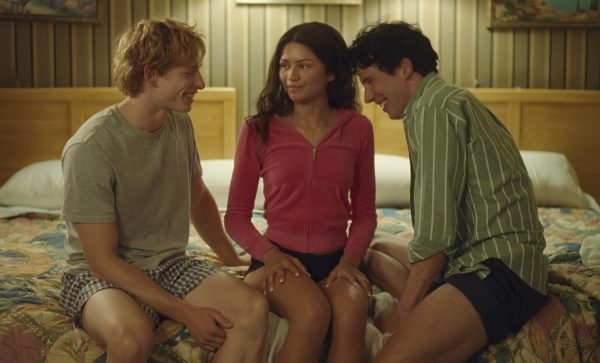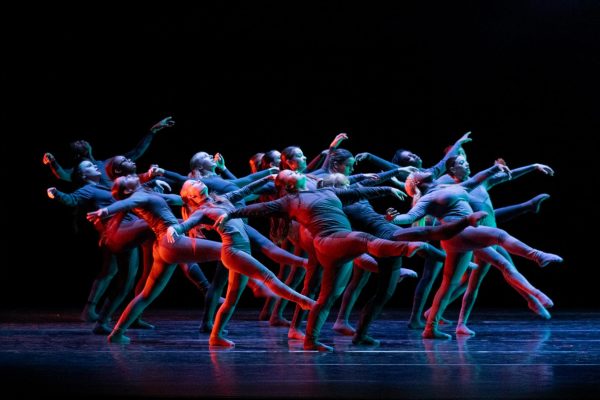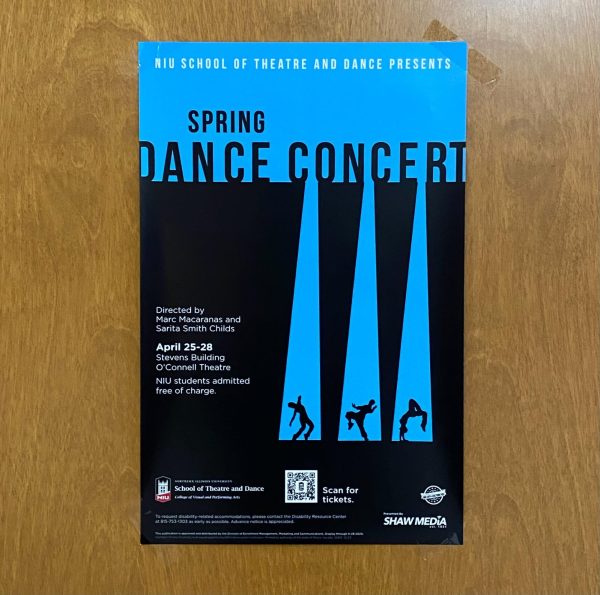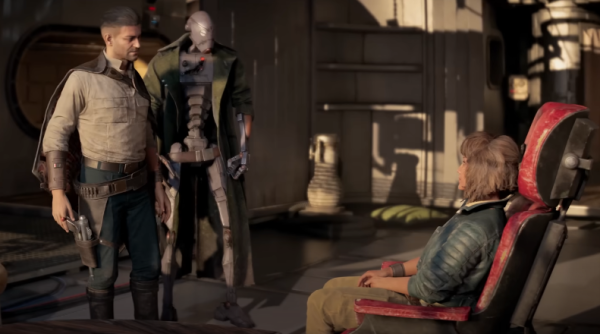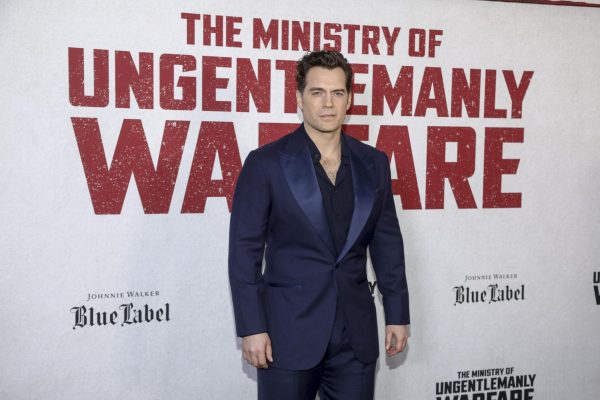School of Music hosts New Music Festival
November 13, 2019
The NIU School of Music hosted the New Music Festival from Nov. 5 to Nov. 8 in the Music Building. Five concerts were shown over the course of four days and the Northern Star Entertainment Section sent multiple reporters to cover this event.
Day 1- Parker Otto | Entertainment Editor
The NIU New Music Festival kicked off 8 p.m. Nov. 5 at the Boutell Memorial Concert Hall in the Music Building. The first concert was dedicated to the work of composer Libby Larsen, who was in attendance and spent time with the School of Music, according to the Northern Star.
The concert began with a performance of “Glint” by the NIU Philharmonic Brass. It seemed as though each type of instrument was playing something different, but they came together magnificently. The first half of the concert was focused heavily on percussion with two songs played with the marimba: a bar instrument similar to a xylophone but with a lower pitch.
The biggest standout of the marimba performances was the song “Like Blind Men Tapping,” which was played by two different people, musicians Jeremy Wall and Sabrina Chen, on one marimba. Wall played the rhythm section while Chen led the song with ferocity.
However, halfway through the song, the musicians switched roles and it was Wall’s turn to take the lead. This song showcased two different styles of playing from two people who were incredibly skilled and was one of the highlights of the show.
After a brief intermission, the concert took a more melodic approach with three songs performed by the NIU Chamber Choir, with a piano backdrop provided by Graduate Assistant Hyounkyoung Kim. These songs were incredible and showed a softer side to Larsen’s catalogue of work.
The NIU Wind Symphony finished out the night with three songs. One of these, “Hambone,” featured the symphony slapping their thighs and clapping their hands to create an exhilarating beat. The final song of the evening, “Ursa,” was led by the tuba, played by School of Music Faculty member Scott Tegge, who was thrilled about playing the song. “The tuba is very underrepresented in music,” Tegge said.
The entire night was spent showcasing Larsen’s work and she really enjoyed how her work was being displayed. “I love music and I love to communicate,” Larsen said. “Music, for me, is like breathing.” Larsen spent several days at the School of Music, visiting classes, meeting students and seeing their work. “It feels like I’m swimming in a pool of talent and energy and creativity on a sunny day,” Larsen said.
Day 2- Jamie O’Toole | Contributor
The second day of the New Music Festival allowed NIU students to show off their skills in composition, percussion instruments and making musical noises with their mouths, while telling a story.
The night began with Monica H. Kim and Stephan Carlson’s piece “Myth of the Color.” Kim played the harp beside other percussion instruments. Benjamin Firer conducted the performance.
Kim, an NIU graduate student, said her piece was inspired by a book she read religiously as a child. She rediscovered the book as she packed to leave for NIU.
What was unique about her performance was that along with the music, a narrator told the story. Kim referred to it as “rhythmic speaking.” Not only was the music pleasant and impressively conducted, but the story added meaning to those listening.
Elena Stavopoulos’ piece “Golden Threads” had two meanings for the name; the first being the golden ratio — the rhythm and pitch the piece was composed of. The second is what the piece was inspired by: the greek myth of The Golden Fleece. Stavopoulos said the fleece was almost hypnotic, and anyone who laid their eyes on it wanted it desperately. She wanted the piece to act the same.
“Golden Threads” eased smoothly into louder percussion sounds throughout the song. There were unexpected divets in the music, grabbing the attention of the audience who wondered where the song might go next.
Transitioning to a dual performance after the first one was refreshing in comparison to the cluster of people. Katie Monroy on cello and Qian Zhang on piano played Craig Peaslee’s “Tres Bailes Latinos” harmoniously. The two sat still behind their instruments, letting the sound perform instead of themselves.
The second half of the festival welcomed mouthpieces. The first to take the stage was Erin Gee, who performed noises similar to ones birds make. She wrote the piece after going to India where she listened to a variety of bird species. Gee had no intention of performing it until a professor said she should.
While most of this performance was talent, it was clear a lot of practice was required to perfect her art. Gee used two microphones throughout her performance and seamlessly and swiftly switched from one microphone for pop noises to another for vocals.
Night two of the festival ended with a second, much longer mouthpiece. There were not only various instruments used in this performance, but objects such as beads and wood tools. These sounds were accompanied by vocals that sounded almost like words being said backwards. The ominous noises, and frog-like sounds created an interesting scene. The piece truly sounded like the noises of a pond in a quiet forest, swaying during a windy night, just before the sun is about to rise.
This night not only brought stories to life, but also brought together settings that are usually pictured with words or visuals. Tonight’s scenes and animals came to life with mere sounds.
Day 3- Jacob Roushia | Contributor
Chicago’s Fifth House Ensemble performed at 6:30 p.m. in the Recital Hall, in the Music building, as part of the NIU New Music Festival, hosted by the School of Music.
Three band members played four different pieces for audience members. Each song had a painting to represent the visual and three of the songs had an introduction by the band members.
Charlene Gluegal played the violin and introduced the show to the audience, Herine Kochak played the massive cello and Katherin Petersen played the piano.
The Recital Hall was not a very large room and the performance was more intimate compared to other concerts. It was remarkable how fast the musicians were strumming their instruments or hitting the keys. Details like that are usually not noticed in a large theatre.
“All the composers that wrote the following songs are alive,” Gluegal said, which prompted laughter. She continued to say “how nice it is to be able to collaborate and work with composers and artists we can talk to.”
Four different paintings were commissioned by the School of Music and each painting represents a single song. The artists were from Bermuda and Costa Rica, Koschak said. “They were given the songs and came up with the following paintings.” The painting were on display throughout the show.
Between song’s the trio would introduce a song by setting the scene. Prior to the song “Lonely Roads,” Gluegal asked for audience participation to make sounds related to mornings. Audience members proceed to whistle or chirp like birds.
Petersen acted like she drank too much wine as part of her character prior to and throughout the “Cafe Music” songs. The trio also acted out a humorous dinner scene before playing ”Night Scenes.”
The laughter of the second half of the show was a contrast to the sad and emotional “Silver Dagger” song that the trio opened with.
The fourth concert for the Music Festival, hosted by the School of Music featured a large array of instruments, including drums, violins, and African instruments.
The show was broken up into three different pieces. Each section featured a different group of members, but all included Gregory Beyer, a contemporary music specialist and percussion professor.
Beyer played the drums, a xylophone and even a berimbau. A berimbau is an African and Brazilian instrument that resembles a bow.
The berimbau was played by all six members that made up the NIU’s Projeto Arcomusical. Matt Ulery who wrote “Emigre and Exile,” joined the group by playing the double bass during the 30 minute set. The performers danced and moved with the music while playing their instruments. Even though the single performance was half an hour long, the time quickly sped by.
The beinbau was a very unique instrument, and even though six people were using the same instrument, they all made starkly different sounds. The double bass is a very large instrument and it was surprising the instrument could be handled with such ease.
The Avalon String Quartet performed a song called “In Transit,” which was made up of stringed instruments and Beyer’s percussion. The different string instruments that played various tones to make up one single sound was delightful.
Beyer also performed a solo version of “Post-Lightened,” accompanied by electronic music. He started the show with this emotional performance. His body language showed the depression and emotion throughout the song.
Day 4- Chris Plumery | Contributor
Abby Fisher is a solo percussionist who has expertise in contemporary, classical and African percussion, and is focused on performing and supporting continued growth of new music.
She displayed her versatile music style, playing more than three instruments at a time as part of the final concert at the NIU New Music Festival 6:30 p.m. Friday at the Recital Hall in the Music Building.
Fisher had four different setups for her solo performance and each set up was for a different style of music. She played several sets on the snare and bass drums, and her technique with the mallet was extremely quick.
She also implemented stories into the performance, multitasking between playing and having a dialogue with the audience. The various topics helped put more emphasis on the music she was playing.
The audience was hooked on the performance, watching intently. The crowd was completely silent and all eyes were on Fisher. In her third set, Fisher used ocean and tropical environment sounds that created a sense of setting in the room that shifted from the more aggressive tone she had with the drums.
For each instrument, each bang created a dramatic effect that harmonized everything together with her dialogue. She changed tempo from low to high as conflict rose with her stories.
The range of stories she told went from a relationship with a parent to the unknowns of the world for a human being. Fisher said, “Can’t know before, nor after, nor during.” The dialogue had a very mystique feel to it.
At the end of the performance the silence was no longer. She received applause from the audience so much so that she had to come back out to give one last bow for the crowd.




